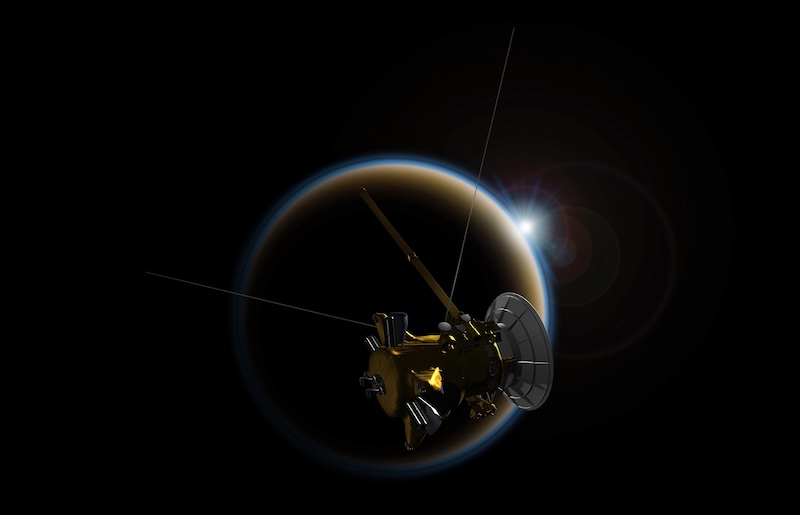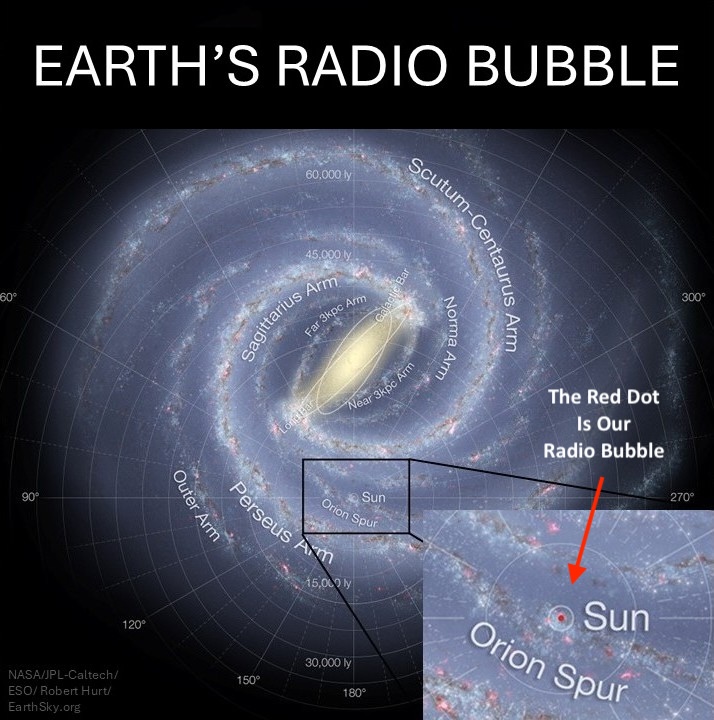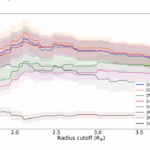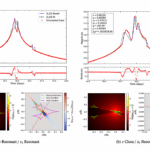Now Reading: Odd, slowly repeating radio bursts traced to red dwarf star
-
01
Odd, slowly repeating radio bursts traced to red dwarf star
Odd, slowly repeating radio bursts traced to red dwarf star
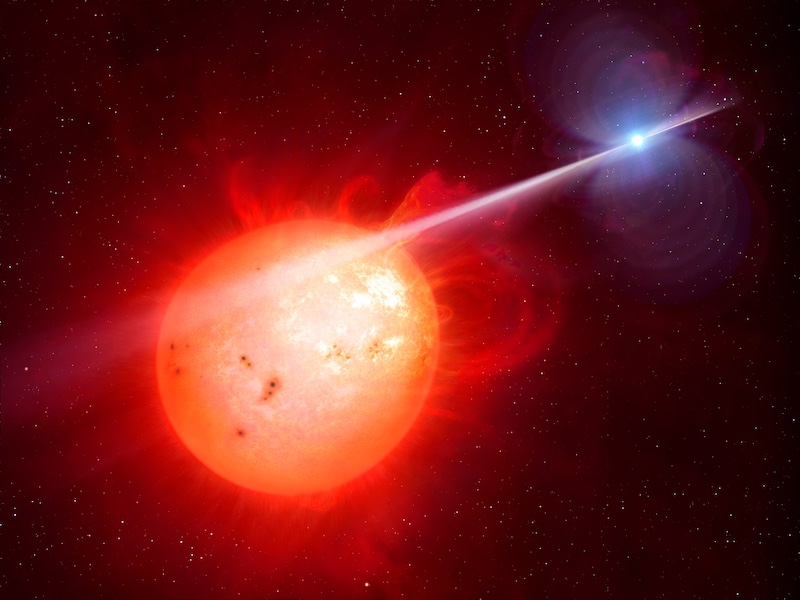

- Slowly repeating radio bursts are natural radio signals from space that are similar to signals from pulsars, but these repeat much more slowly. Astronomers discovered the first one in 2022, which repeated every 18 minutes. Their sources and causes have remained a mystery.
- Now, for the first time, astronomers have pinpointed the origin of a slowly repeating radio burst. It comes from a red dwarf star.
- A white dwarf star might be orbiting the red dwarf. A stream of charged particles from the red dwarf, like our sun’s solar wind, could hit the white dwarf, producing the radio waves.
Unusual, slowly repeating radio bursts
In 2022, astronomers discovered a signal of powerful radio bursts from space that repeated every 18 minutes. What were they and what was causing them? Unlike other similar natural radio pulses, these repeated more slowly and did not seem to be coming from pulsars. So, astronomers have been trying to determine their origin ever since. On December 1, 2024, a team of astronomers led by researchers at Curtin University in Perth, Australia, said the source of a newly discovered slow repeater is a red dwarf star about 5,000 light-years away. And it is likely in a binary orbit with a white dwarf star.
The researchers wrote about the new findings in The Conversation on December 1, 2024. And they published the peer-reviewed results in The Astrophysical Journal Letters on November 26.
Initial discoveries
Astronomers first detected similar repeating radio signals back in 2022, from a source dubbed GLEAM-X J162759.5-523504. They were intense in strength, but after three months, they vanished. What was causing them? Astronomers knew that some other similar repeating radio bursts came from radio pulsars, pulsars that emit radio waves. Pulsars are spinning neutron stars. But they tend to spin rapidly, about once per second or faster. On the other hand, these new signals were repeating much more slowly, only once every 18 minutes.
According to our current knowledge, pulsars that rotate as slow as that should not produce any radio waves. So it seemed less likely that a pulsar was the explanation.
So, was there something about pulsars that scientists didn’t understand yet, or was there another explanation?

Additional slowly repeating radio bursts
Since the initial discovery in 2022, astronomers have found more of the slowly repeating signals, at least 10. Scientists call them “long-period radio transients.” They are similar, in that each radio pulse lasts about a minute. But there’s one problem. All of them are immensely far away, in the heart of our Milky Way galaxy. Natasha Hurley-Walker, a radio astronomer at Curtin University, said in The Conversation:
Until now, every one of these sources has been found deep in the heart of the Milky Way. This makes it very hard to figure out what kind of star or object produces the radio waves, because there are thousands of stars in a small area. Any one of them could be responsible for the signal, or none of them.
Hurley-Walker also said:
The long-period transients are very exciting, and for astronomers to understand what they are, we need an optical image. However, when you look toward them, there are so many stars lying in the way that it’s like 2001: A Space Odyssey. ‘My god, it’s full of stars!’
Slowest radio burst yet
But now, the researchers with the new study have discovered another slow repeater. And it’s the slowest one yet. They discovered it using the Murchison Widefield Array (MWA) radio telescope in Western Australia. Csanád Horváth, an undergraduate student at Curtin University, processed the data. Instead of the inner regions of the Milky Way, the researchers scanned areas farther on the outskirts, with less stars. And they found a new slowly repeating radio source, which they named GLEAM-X J0704-37. As Hurley-Walker explained:
In a stroke of good fortune, the newly discovered transient, named GLEAM-X J0704-37, was found on the outskirts of our galaxy, in a much emptier region of space in the Puppis constellation, around 5,000 light-years away. Our new discovery lies far off the Galactic Plane, so there are only a handful of stars nearby, and we’re now certain one star system, in particular, is generating the radio waves.
But this radio burst source was even slower than previous ones. Instead of 18 minutes, the pulses repeated every 2.9 hours. They are the slowest-repeating radio pulses that astronomers have found so far.
Artist’s impression video of the exotic binary star system AR Scorpii, thought to be similar to GLEAM-X J0704-37. Video via ESO/ L. Calçada/ University of Warwick.
A red dwarf star … and a white dwarf?
This time, the astronomers were able to pinpoint the source of the radio pulses: a red dwarf star. Red dwarfs are smaller and cooler than the sun. They are also the most common type of star in our galaxy.
The researchers used the MeerKAT telescope in South Africa. The radio signals didn’t seem to be coming from the star itself, however. The pulses repeated, like others, but they would vary in time. Sometimes they arrived a bit earlier, and sometimes a bit later. This meant that the actual source of the signals was probably in a binary orbit with the red dwarf.
The researchers said this source was most likely a white dwarf star. White dwarfs are the remaining burned-out cores of sun-like stars that have died. Hurley-Walker said:
Based on previous studies of the evolution of stars, we think this invisible radio emitter is most likely to be a white dwarf, which is the final endpoint of small to medium-sized stars like our own sun. If it were a neutron star or a black hole, the explosion that created it would have been so large it should have disrupted the orbit.
How do they produce the slowly repeating radio bursts?
So, how would a red dwarf and white dwarf produce the repeating radio pulses? The researchers said the red dwarf likely emits a stream of charged particles, like our sun’s solar wind. When those particles collide with the white dwarf’s magnetic field, that would create radio waves.
The red dwarf and white dwarf system AR Scorpii is likely similar to GLEAM-X J0704-37. Radio waves from the white dwarf are hitting the red dwarf, about every two minutes.
Bottom line: Astronomers have pinpointed the source of slowly repeating radio bursts in space for the first time: a red dwarf star with a possible white dwarf companion.
Source: A 2.9 hr Periodic Radio Transient with an Optical Counterpart
Via:
Read more: What’s a pulsar? Why does it pulse?
Read more: Slow-spinning neutron star: A new class of object?
The post Odd, slowly repeating radio bursts traced to red dwarf star first appeared on EarthSky.
Stay Informed With the Latest & Most Important News
Previous Post
Next Post
-
 01From Polymerization-Enabled Folding and Assembly to Chemical Evolution: Key Processes for Emergence of Functional Polymers in the Origin of Life
01From Polymerization-Enabled Folding and Assembly to Chemical Evolution: Key Processes for Emergence of Functional Polymers in the Origin of Life -
 02Panasonic Leica Summilux DG 15mm f/1.7 ASPH review
02Panasonic Leica Summilux DG 15mm f/1.7 ASPH review -
 03Two Black Holes Observed Circling Each Other for the First Time
03Two Black Holes Observed Circling Each Other for the First Time -
 04How New NASA, India Earth Satellite NISAR Will See Earth
04How New NASA, India Earth Satellite NISAR Will See Earth -
 05And Thus Begins A New Year For Life On Earth
05And Thus Begins A New Year For Life On Earth -
 06Astronomy Activation Ambassadors: A New Era
06Astronomy Activation Ambassadors: A New Era -
07SpaceX launch surge helps set new global launch record in 2024













